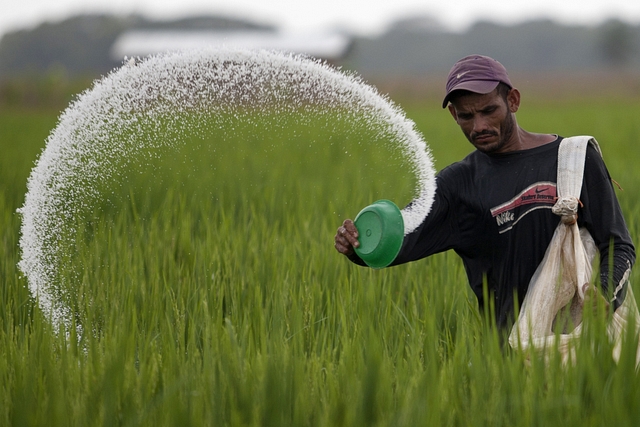
Explained: DAP Fertilizer Subsidy And Why The Government Had To More Than Double It
The union government recently announced a 137 per cent increase in the subsidy on the fertilizer di-ammonium phosphate (DAP) from Rs 511.55 per 50-kg bag to Rs 1,211.55 for the same.
The step is estimated to cost the government an additional Rs 14,775 crore during the coming kharif season alone.
How subsidy operates
After urea, DAP is the second most used fertiliser in India. In the fiscal year 2020-21, the DAP sales amounted to 119.13 lakh tonnes (lt). The fertilizer provides phosphorus (46 per cent) as well as nitrogen(18 per cent) which are important for plant growth.
Unlike urea, the price of the DAP is decided by the manufacturers themselves while the government provides a fixed sum per tonne to the manufacturers as subsidy (which results in them lowering the prices).
The subsidy rates are decided by the government under a nutrient-based subsidy regime (except for urea). Under this regime, the subsidy given to a particular fertiliser is based on its nutrient content.
For FY21, the union government fixed the rates at Rs 18.789 per kg for Nitrogen, Rs 14.888 per kg for Phosphorus, Rs 10.116 per kg for Potassium and Rs 2.374 per kg for Sulphur.
Since one tonne of DAP contains 460 kg of Phosphorus and 180 kg of Nitrogen, the corresponding subsidy works out to be Rs 10,231 per tonne or Rs 511.55 per 50-kg bag.
Why the change?
In a recent meeting chaired by Prime Minister Narendra Modi, the “historic decision” was taken to more than double the subsidy on DAP from the existing Rs 10,231 to Rs 24,231 per tonne (or from Rs 511.55 per 50-kg bag to Rs 1,211.55 for the same ).
The Department of Fertilisers further notified a higher rate for Phosphorus under the nutrient-based subsidy regime — Rs 45.323 per kg as against the earlier Rs 14.888 — while the rates for the other three nutrients — Nitrogen, Potassium, Sulphur — remain unchanged.
This step was taken keeping in mind the rising prices of the DAP thanks to rising international prices of both the final product and the imported raw materials used to manufacture DAP.
As per an Indian Express report, since October 2020, the average import prices of DAP have risen from $395 to $570 per tonne, while shooting up from $275 to $365 for urea, $230 to $280 for MOP, $280 to $550 for ammonia and $85 to $210 for sulphur.
In response, the Indian Farmers Fertiliser Cooperative announced a hike in its MRP of DAP from Rs 1,200 to Rs 1,900 per bag, effective from first April 2021, only for the new stocks.
As the old stock ran out and the kharif planting season approached, farmers were aggrieved by having to pay an extra Rs 700 per bag — on top of Rs 21-22 per litre increase for diesel since April 2020.
It is to address their grievances, that the union government took the step to increase the subsidy for DAP (for urea, the prices are controlled by the government).
Also, the step may not bring down the prices for other non-urea fertilisers, apart from DAP, like MOP (60 per cent Potassium, 40 per cent Nitrogen) etc. Nevertheless, the decrease in MRP for the DAP is a good news for the farmers who use it just before or at the time of sowing due its root strengthening properties.